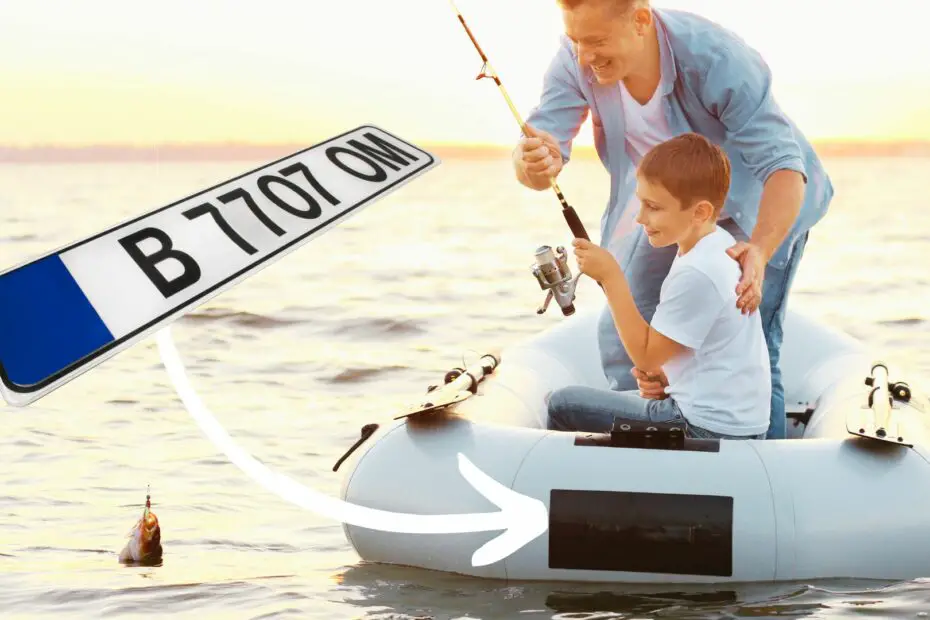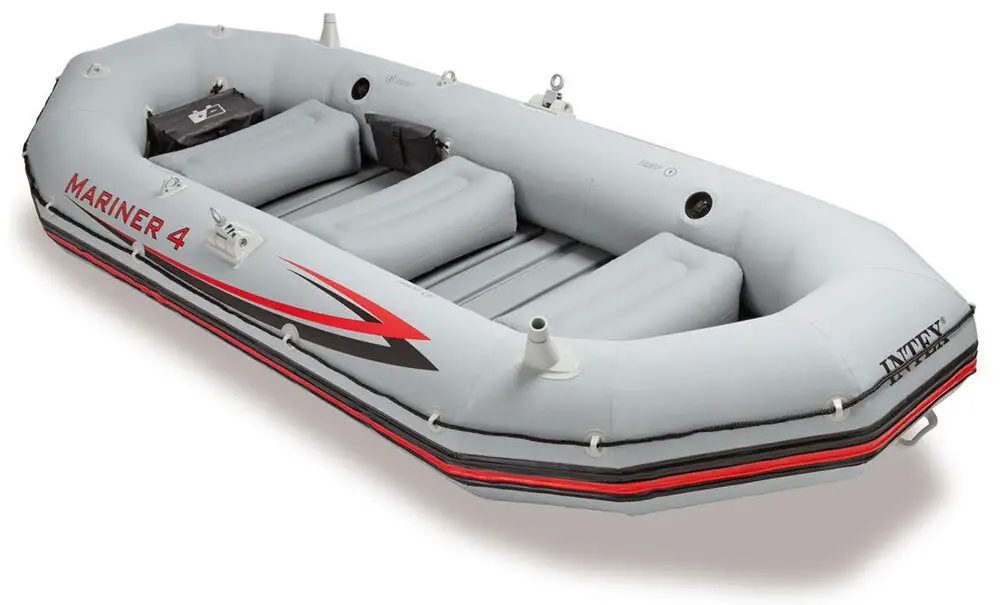When it comes to inflatable boats, ensuring they are properly registered and identifiable is not just a matter of compliance, it’s a crucial aspect of maritime safety. Registration numbers on inflatable boats serve as a unique identifier, much like a license plate on a vehicle, allowing for easy recognition and tracking. This is particularly important in situations involving maritime regulations, search and rescue operations, and maintaining proper records.
Despite their importance, many boat owners find themselves puzzled over the legalities and practicalities of correctly displaying these numbers. Different regions have varying requirements regarding the size, placement, and style of registration numbers on boats. Understanding these regulations is essential to avoid potential fines and ensure your vessel is legally recognized.
This guide is designed to demystify the process of putting registration numbers on inflatable boats. It will walk you through the legal requirements, offer practical advice on choosing the right materials and placement, and provide step-by-step instructions to ensure your boat is compliant and ready for the water.
Understanding Registration Requirements
The specific requirements for registration numbers on inflatable boats can vary, but there are common standards that most regions follow. Typically, these numbers must be of a certain size, color, and placed in a specific location on the boat. For instance, the numbers are often required to be in a bold, block font, easily legible from a distance. The size is usually specified to ensure visibility, with a common requirement being at least three inches in height. As for color, it should starkly contrast with the boat’s color to ensure it stands out. The most common placement is on the forward part of the boat, ensuring it is visible when the boat is in the water.
Differences in Regulations by Region or Country
It’s important to note that regulations regarding registration numbers can vary significantly depending on your region or country. Some areas might have additional requirements about the type of material used for the numbers, or they may need to be displayed on both sides of the boat. In the United States, for example, each state may have specific rules that govern the display of these numbers. On the other hand, European countries might follow different guidelines set by the EU or individual nations. It’s essential for boat owners to consult their local maritime or boating authority for the exact regulations in their area.
Importance of Compliance for Legal Boating
Adhering to these registration requirements is not merely a bureaucratic formality; it’s a legal necessity for responsible boating. Properly displayed registration numbers ensure that your boat is identifiable and compliant with the laws of the waterways. This compliance is crucial for several reasons: it aids in search and rescue operations, helps in monitoring and managing marine traffic, and is often required for insurance purposes. More importantly, non-compliance can lead to fines, penalties, or even impounding of your inflatable boat.
Materials Needed for Applying Registration Numbers
Applying registration numbers to your inflatable boat requires specific materials and tools to ensure the numbers are durable, legible, and compliant with regulations. Here’s a breakdown of what you’ll need:
- Adhesive Numbers or Stencils: You can opt for pre-cut adhesive numbers that stick directly onto the boat’s surface. These are available in various sizes and colors to meet regulatory standards. Alternatively, stencils can be used if you prefer to paint the numbers on. Ensure that the characters conform to the required size and font specifications.
- Specialized Boat Paint: If using stencils, you’ll need paint suitable for inflatable boat materials, such as PVC or Hypalon. This paint should be waterproof, UV-resistant, and capable of withstanding marine environments.
- Waterproof Markers: For smaller corrections or finer details, waterproof markers can be handy. They should be able to adhere well to the boat’s material and remain visible even in wet conditions.
- Safety Equipment and Tools: Safety is paramount when working with adhesives and paints. Gloves, safety glasses, and masks are recommended, especially if you’re working in a less ventilated area. Additionally, you might need cleaning materials to prepare the surface of the boat, like alcohol wipes or a mild detergent solution.
- Recommendations for Durable and Waterproof Materials: When selecting materials, prioritize durability and water resistance. Adhesives should be marine-grade to resist peeling off in water. If painting, choose a paint specifically formulated for marine use to ensure it doesn’t fade or chip easily.
- Application Tools: Depending on your method, you may need brushes or sponges for painting, a ruler or tape measure for proper placement, and a squeegee to smooth out adhesive numbers.
Choosing the Right Location for Numbers
The placement of registration numbers on your inflatable boat is not just a matter of preference; it’s guided by legal requirements and practical considerations to ensure maximum visibility and compliance.
- Explanation of the Best Placement on Inflatable Boats Generally, registration numbers should be placed on the forward half of the boat, on both sides. This positioning ensures that the numbers are easily visible when the boat is in the water. The numbers should be placed high enough above the waterline to prevent them from being obscured by waves or splashes. It’s also important to choose a flat, smooth area for better adhesion of the numbers and clearer visibility.
- Considerations for Visibility and Legal Compliance Visibility is key. The numbers must be legible from a distance, in contrasting color to the boat’s surface. This not only helps in maintaining compliance with maritime laws but also assists in any emergency identification scenarios. Ensure that the placement of the numbers does not interfere with any other boat markings or decorations that might obscure them.
- Tips for Measuring and Marking the Location Accurately Accuracy in placement is essential. Use a measuring tape to determine the exact position, keeping in mind the required distance from the bow. Marking the placement lightly with a pencil or removable marker can help in positioning the numbers correctly before final application. Ensure that the surface is clean and dry before applying adhesive numbers or paint. Using a level can help in ensuring that the numbers are straight and aligned properly.
Step-by-Step Guide to Applying Registration Numbers
Applying registration numbers to your inflatable boat is a straightforward process, but it requires attention to detail to ensure they are applied correctly and in compliance with legal standards.
A. Applying Adhesive Numbers
- Surface Preparation: Start by cleaning the area where you will apply the numbers. Use a mild detergent and water, then wipe it down with alcohol wipes to remove any residue. Ensure the surface is dry before proceeding.
- Positioning the Numbers: Measure and mark the correct position for the numbers, considering the legal requirements for their location and distance from the bow. Use a ruler or tape measure for accuracy.
- Application: Peel off the backing of the adhesive number and carefully place it on the marked spot. Use a squeegee or a flat tool to smooth out the number and eliminate any air bubbles. Press firmly to ensure strong adhesion.
B. Painting Numbers Using Stencils
- Stencil Placement: After cleaning the surface, position your stencil in the correct spot. Secure it with masking tape to prevent movement during painting.
- Paint Application: Use a small brush or sponge to apply marine-grade paint within the stencil. Be careful not to overload the brush to avoid paint bleeding under the stencil. Apply multiple thin coats if necessary, letting each coat dry before applying the next.
- Removing the Stencil: Once the final coat of paint is dry, carefully remove the stencil. Clean up any edges with a small brush or waterproof marker if needed.
C. Ensuring Numbers are Straight and Evenly Spaced
- Use a Level and Ruler: Employ a level to ensure that your numbers are straight. A ruler or tape measure will help maintain even spacing between each character.
- Double-Checking Measurements: Always double-check your measurements before applying or painting the numbers. Small errors can lead to uneven and misaligned numbers.
- Visual Inspection: After applying the numbers, step back and visually inspect them from a distance. This can help identify any alignment or spacing issues that might not be noticeable up close.
Tips for Maintaining Visibility of Registration Numbers
Maintaining the visibility of your inflatable boat’s registration numbers is crucial for compliance and safety. Here are some strategies to ensure they remain clear and legible over time:
Protecting Numbers from Wear and Water Exposure
- Use of Protective Coatings: Consider applying a clear UV-resistant sealant over adhesive numbers or painted areas. This helps protect the numbers from fading due to sun exposure and from peeling or chipping due to water and wear.
- Choosing High-Quality Materials: Initially, use high-quality, marine-grade materials for both adhesive numbers and paint. These materials are designed to withstand harsh marine environments.
- Avoiding Abrasive Cleaning: When cleaning your boat, avoid using abrasive materials or harsh chemicals near the registration numbers. Stick to mild detergents and soft cloths or sponges.
Regular Maintenance Checks and Touch-Up Tips
- Routine Inspections: Regularly inspect the registration numbers for signs of wear or damage. Frequent checks are especially important after long periods of storage or after rough water conditions.
- Touch-Up Techniques: For painted numbers, keep a small amount of the original paint for touch-ups. Use a fine brush for precision. For adhesive numbers, have a few spare numbers on hand to replace any that become damaged or start to peel.
Advice on How to Remove and Replace Numbers if Necessary
- Removing Old Numbers: If you need to remove old numbers, gently heat them with a hair dryer to loosen the adhesive. Use a plastic scraper to gently lift them off. For painted numbers, use a mild solvent that won’t damage the boat’s material.
- Surface Preparation for New Numbers: Clean the area thoroughly before applying new numbers. Ensure the surface is free of residue and completely dry.
- Applying New Numbers: Follow the same process as initially outlined for applying new adhesive numbers or painting new ones. Ensure they are in the correct position and firmly adhered or painted.
Legal and Safety Considerations
Ensuring your inflatable boat’s registration numbers are properly displayed is not just a regulatory requirement; it’s a critical aspect of boating safety and legal responsibility. Here’s what you need to know:
Overview of the Legal Consequences of Non-Compliance
- Fines and Penalties: Non-compliance with registration number regulations can result in fines and penalties. These vary depending on the jurisdiction but can be significant.
- Inspection Issues: Boats without proper registration numbers may be subject to inspections, leading to potential delays and additional scrutiny from maritime authorities.
- Legal Liabilities: In the event of an accident or legal dispute, not having visible and compliant registration numbers can complicate legal proceedings and potentially lead to increased liabilities.
Relationship Between Visible Registration Numbers and Boating Safety
- Identification in Emergencies: Visible registration numbers are essential for identification in search and rescue operations. They allow authorities to quickly identify and assist boats in distress.
- Traffic Management: On busy waterways, clear registration numbers help in managing marine traffic and preventing accidents.
- Accountability: Displaying registration numbers promotes responsible boating behavior, as it holds boat owners accountable for their actions on the water.
Reminder of the Need for Regular Legal Updates on Registration Numbers
- Keeping Information Current: It’s important to regularly check that your registration details are up to date. This includes updating your registration numbers if they become worn or if your registration details change.
- Legal Requirement: In many jurisdictions, updating registration numbers and details is a legal requirement. Failure to do so can result in non-compliance penalties.
- Staying Informed: Boat owners should stay informed about changes in maritime laws and regulations regarding registration numbers to ensure ongoing compliance.
Conclusion
In this comprehensive guide, we’ve navigated through the essential steps and considerations for properly applying registration numbers to inflatable boats. To recap:
- Understanding the Legal Requirements: We discussed the importance of familiarizing yourself with the specific regulations regarding size, color, and placement of registration numbers, which vary by region.
- Choosing the Right Materials: Selecting durable and waterproof materials like adhesive numbers or marine-grade paint and ensuring you have the right tools is key for a successful application.
- Proper Placement: We emphasized the importance of placing numbers in a location that ensures visibility and legal compliance.
- Step-by-Step Application: We provided detailed instructions for both adhesive and painted methods, ensuring your registration numbers are applied neatly and correctly.
- Maintenance for Visibility: Regular maintenance and understanding how to protect and, if necessary, replace your registration numbers keep them legible and compliant.
- Legal and Safety Considerations: Lastly, we touched on the legal implications of non-compliance and the crucial role visible registration numbers play in boating safety.
Boating is a wonderful experience, but it comes with the responsibility of prioritizing safety and legality. Properly displaying your inflatable boat’s registration numbers is a key part of this responsibility. Not only does it keep you compliant with maritime laws, but it also ensures your vessel is easily identifiable in case of emergencies, contributing to safer waterways for everyone.
We invite you to share your experiences and tips regarding the application of registration numbers on your inflatable boats. Your feedback and stories not only enrich this guide but also help fellow boaters in their efforts to remain safe and compliant on the water.
Thank you for joining us in this important discussion, and here’s to safe and enjoyable boating adventures!


